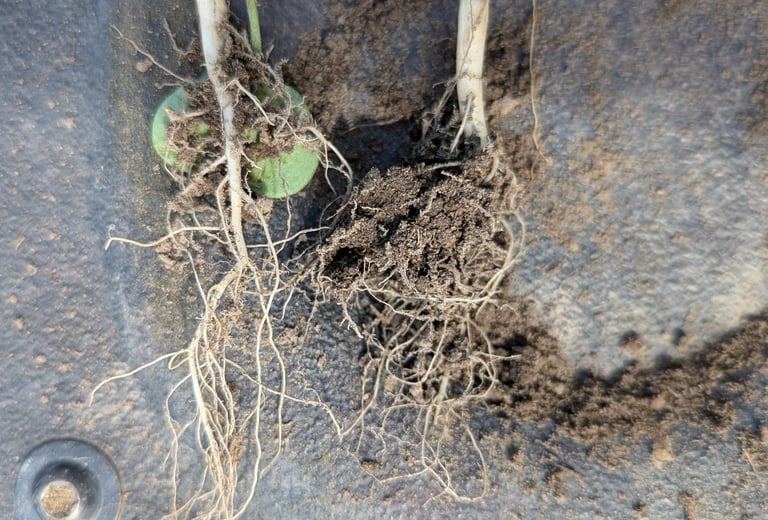Enhance Farm Sustainability with Regenerative Agriculture Practices
REGEN AG


Learn how organic matter and composting play a crucial role in regenerative agriculture by improving soil health, boosting fertility, and supporting biodiversity. This article explores sustainable practices like cover cropping, no-till farming, and rotational grazing that enhance soil structure, increase water retention, and reduce environmental impact.
Organic Matter and Composting in Regenerative Agriculture
Organic matter and composting are foundational elements of regenerative agriculture, playing a crucial role in improving soil health, enhancing biodiversity, and increasing crop productivity. These practices contribute to building healthy soils that are rich in nutrients, capable of retaining moisture, and resilient against erosion. This article explores the importance of organic matter and composting in regenerative farming systems and provides insights into how these practices support sustainable agriculture.
The Role of Organic Matter in Soil Health
Organic matter is a key component of healthy soils. It consists of decomposed plant and animal materials, such as leaves, manure, and compost, which enrich the soil with essential nutrients and improve its structure. High levels of organic matter increase the soil’s ability to retain water, support microbial life, and facilitate nutrient cycling.
1. Nutrient Cycling and Soil Fertility: Organic matter enhances soil fertility by providing a continuous supply of nutrients. As organic materials decompose, they release nitrogen, phosphorus, potassium, and other essential nutrients that plants need for growth. This natural process reduces the need for synthetic fertilizers, making farming more sustainable. For more details on soil fertility and organic matter, refer to the Ontario Provincial Soil Strategy and Agriculture and Agri-Food Canada.
2. Soil Structure and Water Retention: Organic matter improves soil structure by increasing soil aggregation. Well-aggregated soils have better water infiltration and retention, reducing the risk of drought and erosion. This also promotes root development and improves plant health. Learn more about soil structure and organic matter from the USDA NRCS and NSW Department of Primary Industries.
3. Supporting Soil Microorganisms: The presence of organic matter fosters a diverse ecosystem of soil microorganisms, including bacteria, fungi, and earthworms. These organisms play a critical role in breaking down organic material, cycling nutrients, and improving soil health. For insights on promoting soil biodiversity, visit the Organic Agriculture Centre of Canada and Regen Farmer.
Benefits of Composting in Regenerative Agriculture
Composting is the process of decomposing organic matter into humus—a nutrient-rich material that enhances soil health. Composting is an integral part of regenerative agriculture, offering numerous environmental and economic benefits.
1. Enhancing Soil Fertility: Composting enriches the soil by adding humus, which provides a slow-release source of nutrients. This improves soil fertility and reduces the reliance on chemical fertilizers. Composting also helps balance soil pH and enhances the availability of micronutrients essential for plant growth. For more on composting and soil fertility, see the Ontario Provincial Soil Strategy and Agriculture and Agri-Food Canada.
2. Reducing Waste and Greenhouse Gas Emissions: Composting diverts organic waste from landfills, where it would otherwise decompose anaerobically and produce methane, a potent greenhouse gas. By composting organic materials, farmers can reduce their environmental footprint and contribute to climate change mitigation. Learn more from Project Drawdown and Regen Organic Certified.
3. Improving Soil Structure and Water Management: Compost improves soil structure by increasing the soil’s ability to hold water and nutrients. It also enhances aeration and drainage, which are crucial for root development and plant growth. Composting practices that improve soil structure are detailed by the Savory Institute’s Land to Market program and Alberta Sustainable Agriculture.
Integrating Organic Matter and Composting into Farming Systems
Integrating organic matter and composting into regenerative farming systems requires thoughtful planning and management. Here are some strategies to consider:
1. Cover Cropping: Planting cover crops is an effective way to add organic matter to the soil. Cover crops, such as clover and rye, protect the soil from erosion, improve soil structure, and add organic residues that decompose into valuable organic matter. Resources on cover cropping can be found on Farmers.gov and the Soil Conservation Council of Canada.
2. No-Till Farming: No-till farming reduces soil disturbance, allowing organic matter to accumulate on the soil surface. This practice helps retain soil moisture, supports microbial life, and reduces erosion. More information on no-till farming and its benefits can be found on No-Till Farmer and IWMI.
3. Rotational Grazing: Integrating livestock into crop rotations through practices like rotational grazing adds organic matter to the soil in the form of manure, which decomposes and enriches the soil. This practice also enhances nutrient cycling and improves soil structure. Visit the Savory Institute for more details on rotational grazing.
Organic matter and composting are vital components of regenerative agriculture, contributing to healthier soils, increased crop productivity, and reduced environmental impact. By incorporating these practices into farming systems, farmers can build resilient soils that support sustainable agriculture and help mitigate climate change.
Interested in improving soil health through organic matter and composting? Explore resources from the Ontario Provincial Soil Strategy, USDA NRCS, and Organic Agriculture Centre of Canada to start implementing these practices on your farm today!




